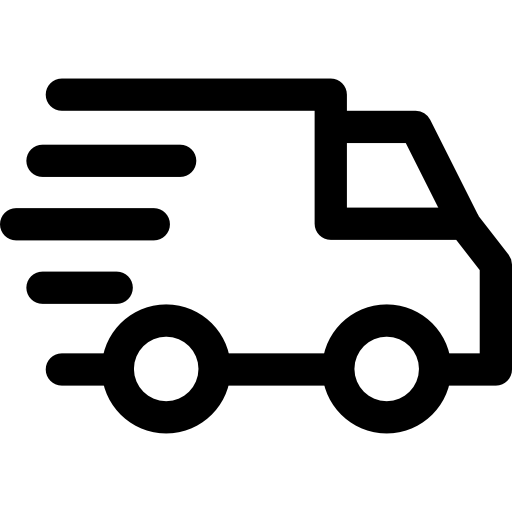Hast du dich schon mal gefragt, was Sport von allen anderen Aktivitäten unterscheidet, mit denen der Mensch sich beschäftigt? Ich finde, dass es der Dopaminrausch ist, der durch die Herausforderung entsteht – eine biochemische Reaktion in unserem zentralen Nervensystem, die für eine Rückmeldung sorgt, welche die Schwelle der Stimuli aus unserem Alltag übersteigt. Solche Theorien sind es, die mir nach einem langen Arbeitstag durch den Kopf gehen. Vielleicht sind das meine derzeitigen Stimuli, wenn ich den Spaß bei meiner Forschungsarbeit mit meiner Vorfreude auf den nächsten Klettertag kombiniere.
Ich bin Kletterer und studiere Molekularmedizin in Innsbruck. Ich arbeite außerdem in der virologischen Abteilung der medizinischen Universität Innsbruck. Im starken Gegensatz zu meinen Kletterkollegen, die scheinbar endlose Boulder- und Klettertage genießen, freue ich mich auf die Wochenenden. Dadurch bin ich sehr wählerisch bei meinen Wochenendausflügen geworden, weil ich das meiste aus meiner begrenzten Kletterzeit herausholen möchte. Und so hat sich das Zillertal, das nur 30-45 Minuten mit dem Auto entfernt ist, zu meiner Boulder-Oase entwickelt.
Während ich in der Klettergemeinschaft in Kitzbühel, Österreich, aufwuchs und auch später, als ich durch das Land und die Welt reiste, faszinierten mich die Geschichten rund um die hochwertigen Granitfelsen, die friedlich wie schlafende Riesen in den Wäldern des Zillertals liegen. Hier gibt es eine solche Vielzahl an Felsen, dass die Kletterführer nur die bekanntesten und klassischsten Routen vorstellen können. Die neueren Kletterschätze hingegen gibt es nur als Skizzen auf Bierdeckeln oder in Form von etwas unscharfen Handyfotos.

Da die Möglichkeiten des Zillertals den Rahmen dieses Blogs absolut sprengen, möchte ich mich auf einige Boulder in zwei bestimmten Regionen beschränken. Die erste ist Ginzling, wo die Zeit zwischen ruhigen, moosbedeckten Wäldern still zu stehen scheint, sodass du jeglichen Stress oder Alltagsprobleme hinter dir lassen kannst. Die andere ist die Zemmschlucht und ist das Gegenteil von Ruhe. Hier rauscht ein wilder Fluss wie eine Arena voller Zuschauer, die dich anfeuern.
Schwierigkeitsgrad
Wenn du eher wettbewerbsorientiert kletterst (so wie ich), werden die Schwierigkeitsgrade einiger Boulder wie ein Schlag ins Gesicht für dich sein, denn der Stil ist sehr speziell. Die Analyse der richtigen Beta ist fast genauso wichtig wie die entsprechende körperliche Verfassung für die Ausführung. Wenn du hart in der Halle kletterst, ist das auf keinen Fall mit dem Schwierigkeitsgrad im Tal gleichzusetzen. Doch wenn du den für die meisten Boulder spezifischen Kletterstil (crimpy / compression-like / tension-based) herausfindest, wirst du eine tolle Zeit haben!
Ginzling
- Yellow Submarine (6b): Dieser wunderschöne Boulder mit einem leichten Überhang ist ein klassisches Warmup mit guten Crimps.
- Bambi (6c+): Auch wenn es hier einen schwierigen Sitzstart gibt, handelt es sich um ein gutes Warmup, bei dem du mit den Kanten an der linken und rechten Seite des Felsens nach oben gelangst.
- Scharfes Loch (6b+): Das Scharfe Loch wird seinem Namen gerecht. Es ist eine tolle Linie mit guten Jugs und einem einzigartigen Loch.
- Sundance Sit (8a+): Ein toller Boulder, für den du gut im Hooken und Knieklemmer sein musst. Außerdem ist es empfehlenswert, mindestens drei Matten und einen adäquaten Spotter dabei zu haben.
- Sundance Kit (7b+): Ein einfacherer stehender Start bei Sundance Sit, wo auf das Hooken am Anfang verzichtet wird.
- Incubator (8b): Das ist der klassische Boulder in dem Gebiet, der zwei Schlüsselstellen und einen Sitzstart umfasst, welcher dich zu einem oft feuchten Crimp bringt.
Zemmschlucht – am Fluss
- Black Beauty (8a): Diese Linie beginnt mit einem schweren Gaston gefolgt von einem Jug an der Spitze des Blocks. Bei dieser Herausforderung musst du jedoch den Fluss berücksichtigen, da der Ort nach Regenschauern und während der Schneeschmelze nicht zugänglich ist.
- Der Weg zum Horn (8a): Ein wunderschöner Highball mit einigen runden Crimps im unteren Bereich und Platten am Topout.
- Chop Suey (7c+): Tolle Bewegungen, die jeder als Klassiker erachtet.
- Traumschiff (8b+): Diese spektakuläre Linie folgt einem Arête mit komplexen Bewegungen, bei der eine gute Hook-Technik und Hüftflexibilität von Vorteil sind.
Zemmschlucht – am Hang über der Straße im Wald
- Nihilist (8a) / Nihilist low (8b) / Nihilist sit (8b+): Diese Linien erheben sich zu einem fast horizontalen Dach und sind einige der besten Probestrecken für diesen Schwierigkeitsgrad im Tal. Ich empfehle dir dringend eine Kniematte, wenn du unten anfängst!
- Podestinger (8a): Das ist eine hervorragende Herausforderung mit einem halben Dyno nach einem schweren Crimp und Toehook hin zu einer guten linken Pocket. Der Sitzstart sorgt für ein (+), auch wenn es noch einige Diskussionen über den Schwierigkeitsgrad dieser relativ neuen Herausforderung gibt.

Kletterführer
Alpen en bloc 2 von Copertine Flessibile ist ein guter Kletterführer für das Zillertal und deckt auch viele andere Gebiete ab. Leider wurde er 2017 veröffentlich und viele der neuesten Routen sind nicht darin enthalten. Dafür empfehle ich, dass du dich online bei 27crags, thecrag und Markus-schwaiger.at umsiehst. Er ist einer der Pioniere im Tal und stellt einige tolle Betas zur Verfügung.
Ausrüstung
Neben ausreichend Wasser empfehle ich eine Menge Bouldermatten, da es bei vielen Bouldern schwierige Landungen gibt. Außerdem sind ein Klettergurt, ein kurzes Seil und Expresssets bei einigen Highballs hilfreich, da viele Boulder mit Haken oben ausgestattet sind. Zudem ist ein Fingerboard oder etwas Ähnliches zum Aufwärmen sehr wichtig, da es bei vielen Bouldern keine Optionen in der Nähe gibt. Wie bereits erwähnt solltest du viel warme Kleidung mitbringen, wenn du im Winter kommst, da wir uns hier in den Bergen befinden und es schnell kalt wird.
Klettersaison
Die beste Zeit zum Bouldern hängt davon ab, ob dir Haftung wichtiger ist als alles andere. Die beste Haftung hat man in der Regel gegen Winterende und Frühlingsanfang, wenn die Temperaturen selten über 10-15 °C liegen. Wenn du in dieser Zeit kommst, solltest du eine Schaufel für die Topouts mitbringen. Und natürlich viel warme Kleidung und Tee, da im Wald keine Lagerfeuer erlaubt sind. Wenn du lieber bei wärmerem Wetter kletterst, solltest du am besten im Frühling und Herbst kommen, wenn die Temperaturen zwischen 15 bis 20 °C liegen. Doch auch im Sommer kann es geeignete Bedingungen geben, besonders in der Zemmschlucht. Außer im Winter ist es jedoch sehr wichtig, das Wetter über mehrere Tage hinweg zu beobachten, bevor du klettern möchtest, da einige Boulder aufgrund des wenigen Sonnenlichts etwas Zeit benötigen, um abzutrocknen.

Schlafplätze
Es ist verboten, auf Parkplätzen in der Nähe der Bouldergebiete oder in anderen Bereichen, die nicht explizit als Campingplätze ausgewiesen sind, zu übernachten. Es gibt jedoch direkt im Tal Campingplätze; der beliebteste ist in Mayrhofen. Wenn du es lieber etwas komfortabler hast, findest du auch Pensionen in Mayrhofen und den umliegenden Dörfern.
Essen, trinken und lokale Kletterer treffen
Wenn du fantastisches Tiroler Essen liebst, hat das Zillertal viel zu bieten. Als Faustregel gilt: Jedes Restaurant mit „Stubn“ im Namen ist eine hervorragende Wahl. Als lokale Spezialitäten solltest du Spinatknödel probieren. Und natürlich Kaiserschmarrn, der sowohl als Mahlzeit als auch Dessert angeboten wird. Doch sei gewarnt: Es gibt eine unendliche Debatte, ob man ihn am besten mit Zwetschkenröster, einer Art Pflaumenmarmelade, oder Apfelmus isst. Ich mag Zwetschkenröster am liebsten.











